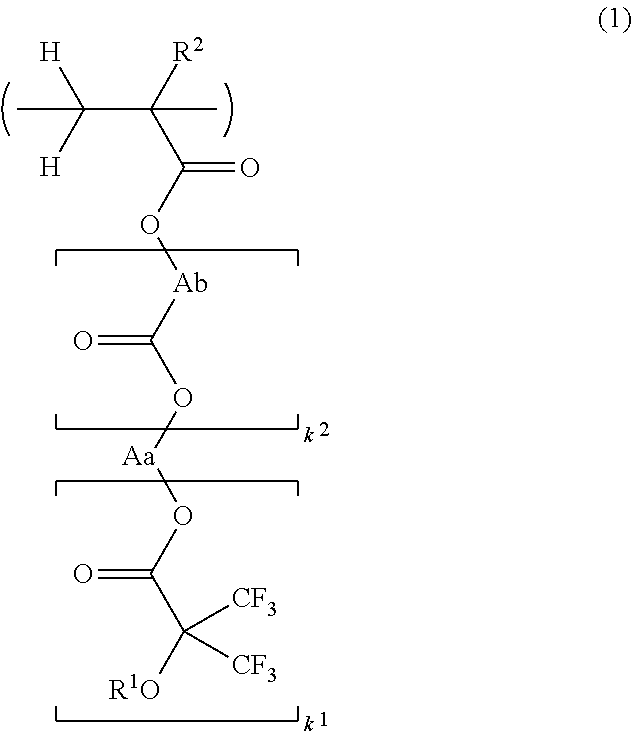Resist protective film-forming composition and patterning process
a film-forming composition and film-forming technology, applied in the field of photolithography process, can solve the problems of pattern collapse, pattern change or even collapse, and induce defects, etc., and achieve the effect of good profile, easy handling and convenient availability
- Summary
- Abstract
- Description
- Claims
- Application Information
AI Technical Summary
Benefits of technology
Problems solved by technology
Method used
Image
Examples
reference example 1
[0149]Fluorinated monomers were synthesized according to the following formulation.
reference example 1-1-1
Synthesis of Starting Alcohol 1
[0151]A flask equipped with a distillation column was charged with 20.0 g of methyl 3,3,3-trifluoro-2-hydroxy-2-(trifluoromethyl)propionate, 16.5 g of ethylene glycol, 50 mL of benzene, and 0.9 g of sodium methoxide (28 wt % methanol solution). In a nitrogen atmosphere, the reaction mixture was heated under reflux for 6 hours while methanol formed during reaction was sequentially distilled off. This was followed by ordinary aqueous work-up, solvent removal by distillation, and purification by distillation, obtaining 17.2 g of Starting Alcohol 1 (yield 76%).
[0152]Boiling point: 64° C. / 170 Pa
PUM
| Property | Measurement | Unit |
|---|---|---|
| wavelength | aaaaa | aaaaa |
| wavelength | aaaaa | aaaaa |
| scanning speed | aaaaa | aaaaa |
Abstract
Description
Claims
Application Information
 Login to View More
Login to View More - R&D
- Intellectual Property
- Life Sciences
- Materials
- Tech Scout
- Unparalleled Data Quality
- Higher Quality Content
- 60% Fewer Hallucinations
Browse by: Latest US Patents, China's latest patents, Technical Efficacy Thesaurus, Application Domain, Technology Topic, Popular Technical Reports.
© 2025 PatSnap. All rights reserved.Legal|Privacy policy|Modern Slavery Act Transparency Statement|Sitemap|About US| Contact US: help@patsnap.com



